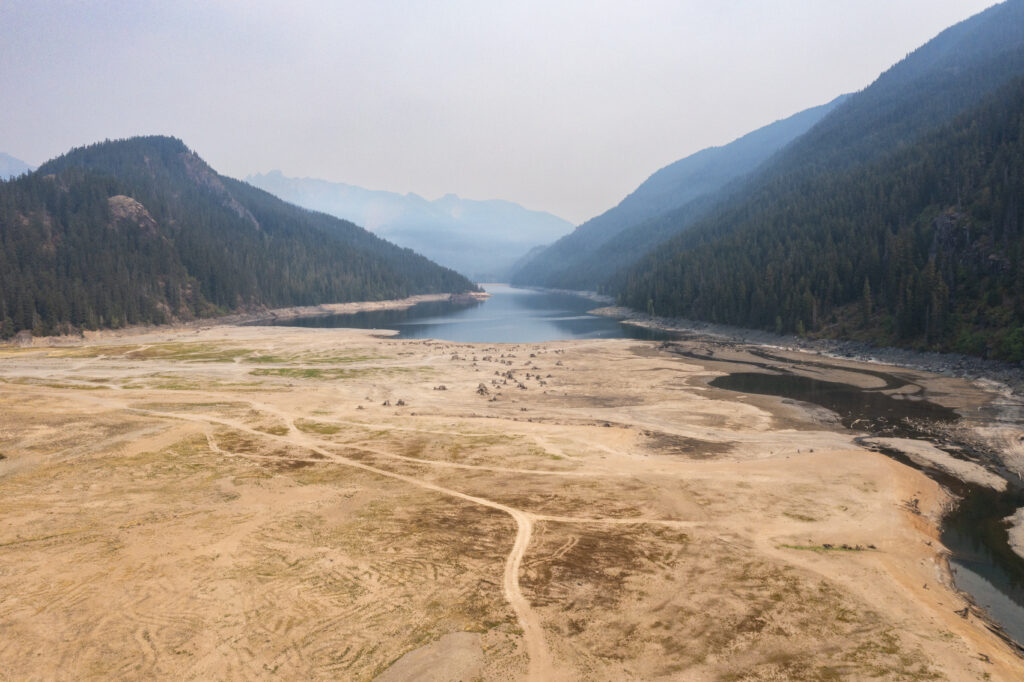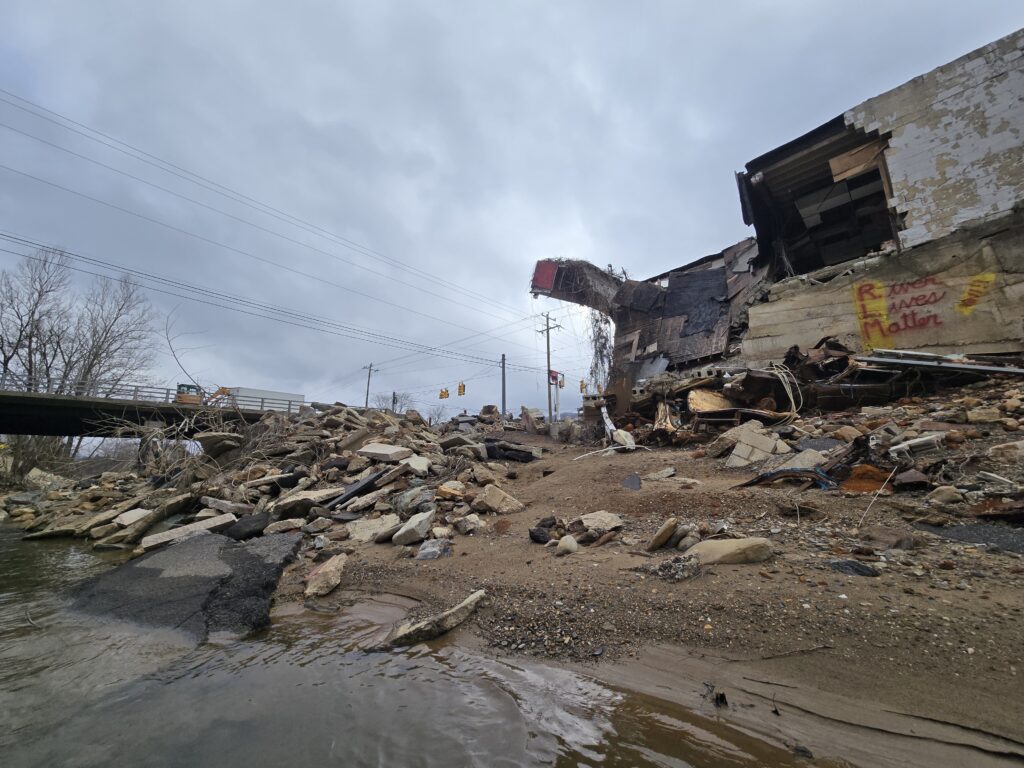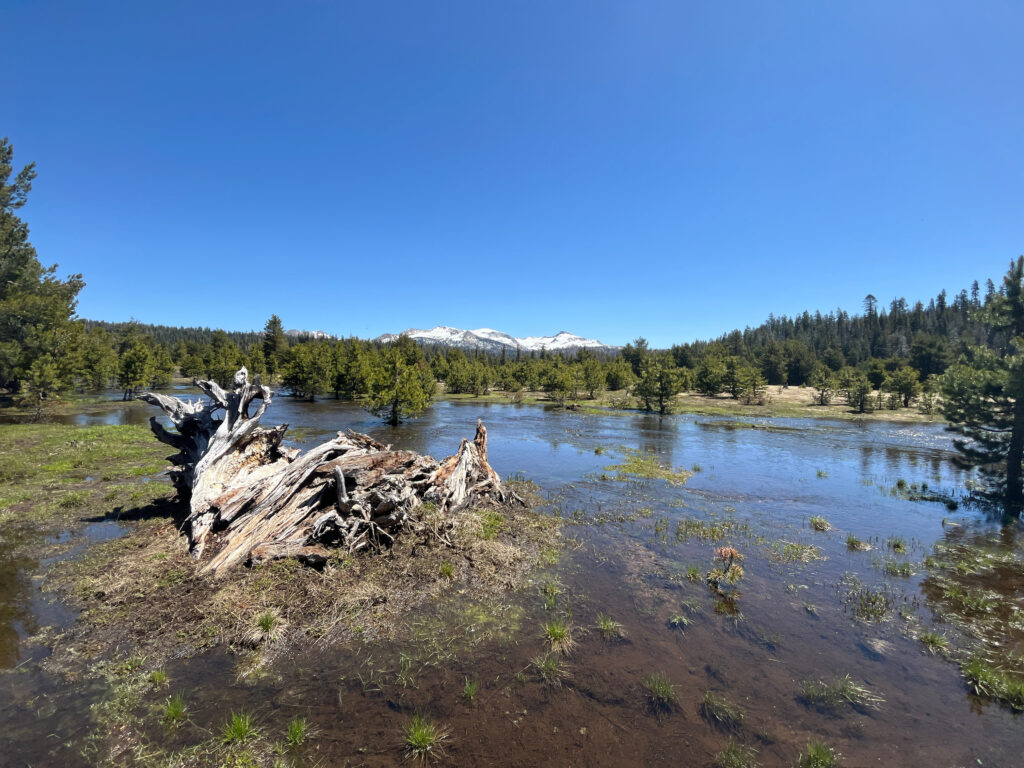Restoring Rivers To Protect Communities From Climate Change
We need to increase natural resiliency in vulnerable areas by removing dams and restoring wetlands throughout the northeast.
The amount of impervious surface—those surfaces covered in concrete, buildings, etc.—in our communities can turn even an average rain event into cause for concern.
However, it is often more catastrophic events that serve as a wakeup call and spur change. In the wake of the flooding damage caused to the northeast by Hurricane Sandy, the federal government made funds available to help vulnerable coastal communities bolster their first line of natural defense – rivers and wetlands.
Healthy rivers and wetlands are like natural sponges. Wetland soils and plants can quickly trap and absorb rapidly increasing volumes of water. In fact, one acre of healthy wetlands can store 1 million gallons of water. Additionally, healthy floodplains often contain native vegetation and woody material that provide plenty of friction to slow storm surge and help alleviate the effects of flash flooding.
This summer and fall, American Rivers and several of our partners are working with the U.S. Fish and Wildlife Service, National Fish and Wildlife Foundation and others to increase natural resiliency in vulnerable areas by removing dams and restoring wetlands throughout the northeast.
Tidmarsh Creek, MA
In Massachusetts, American Rivers is pleased to be a part of the Tidmarsh Farms Restoration Project, which is the largest freshwater wetlands restoration project in the state. The area was once modified and flooded to create cranberry bogs. The project, which is being spearheaded by the Massachusetts Division of Ecological Restoration, will remove three dams, including Beaver Dam, and recreate a more natural floodplain in the headwaters areas. Specifically, the project team will reconstruct the stream channel, seed the area with extensive planting, and restore fish passage to a coastal pond and 3.5 miles of stream. Once complete, the area will boast 250 acres of healthy coastal wetlands, unobstructed stream miles for fish traveling from the ocean to spawning grounds in the headwaters, and diverse habitat for wildlife throughout the project site.
Centreville, MD
Despite its diminutive size, the Centreville Dam exacerbates upstream flooding on Gravel Run, threatening local businesses and the police station that is located along its impoundment. With climate change expected to increase the incidents of flooding in the area, American Rivers, the Town of Centreville and others are partnering to improve local flood resiliency by removing the dam and restoring the natural stream channel and surrounding habitat. In addition to alleviating some upstream flooding, removal of the dam will provide access to additional upstream habitat for river herring and other native fish.
Musconetcong River, NJ
The Musconetcong River has been an important resource in the Delaware River Basin since at least the 1600s. American Rivers has partnered with the Musconetcong Watershed Association for several dam removals along its length in prior years, and we’re excited to continue the work this fall. The goal of this project is to remove the Hughesville Dam and revitalize 6.95 miles of habitat just upstream of the Musconetcong’s confluence with the Delaware River. The second, forthcoming phase of this project will remove the next upstream dam, the Warren Glen Dam, in order to add five additional free-flowing river miles. Once complete, the Musconetcong will have a total of 30 river miles under the Wild and Scenic designation.
West River, CT
Originally built in 1794, the Pond Lily Dam currently presents a flood hazard two ways. Not only is it an impediment to natural stream flows and healthy habitat, but the dam is in disrepair and at high risk of failure. The Pond Lily Dam is also a barrier for migratory fish in the West River. Removing it will allow the Connecticut Fund for the Environment to help restore access to 2.6 miles of habitat on the West River as well as 76 acres of Konold’s Pond habitat for native species like alewife and blueback herring, as well as peace of mind to its neighbors.




1 response to “Restoring Rivers To Protect Communities From Climate Change”
I really like that you pointed out how one acre of healthy wetlands can store 1 million gallons of water. This very point alone is enough for the people in charge to look into professional river restoration services. Climate change is real, and I think we should take collective action to avoid potential tragedies. Thanks for the really informative article about river restorations!